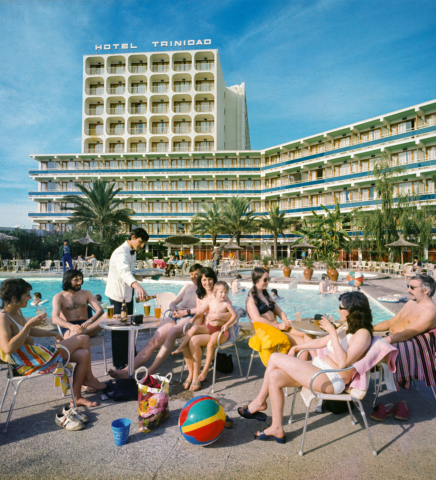Modern: Gardens Over Time
By Catarina Wilk
Imagine. A light spring breeze, a beautiful array of flowers flowing in the wind (each being utterly magnificent) and birds who are singing jolly melodies. All that reminds us of this type of garden we all secretly want.
The fascination when it comes to nature and especially gardens is a topic that many artists have tried to capture in their art works over decades.
In this respect, Claude Oscar Monet is a very popular name in the long history of painting gardens. The French Impressionist painter, known for rejecting the traditional approach to landscape painting, did not copy the Old Masters. Instead, Monet rather observed nature itself. To be precise, the painter observed variations of colour and light caused by the daily or seasonal changes and captured these moments in his intriguing paintings.

Claude Monet, Garden at Giverny, 1900.

Claude Monet, Bridge at Giverny, 1899.
Using the work of Monet as a starting point, “Painting the Modern Garden: Monet to Matisse” at the Royal Academy of Arts examines the role gardens played from the early 1860s to the 1920s.
Interestingly, for Monet, Kandinsky, Matisse and many others, nature and especially the garden “gave them the freedom to break new ground and explore the ever-changing world around them”.

Young Women in the Garden by Henri Matisse

Dizzying: ‘Murnau The Garden II’, by Kandinsky, 1910
These days, we all know that modern life has a major impact on various different fields. In terms of gardens and their designs, many landscape gardeners feel drawn to very modern designs when it comes to developing ideas and the actual design process. At this point it is striking that especially modern Japanese inspired gardens are on trend and these two examples of Japanese inspired gardens clearly show a modern approach.
Modern Japanese garden design developed during 1926 and 1988. At this time in history, many traditional gardens were primarily built by politicians and other businessmen. Further, the principal builders of those gardens were no longer private individuals and especially after World War II, banks, hotels, universities and government agencies got involved and became the major builders instead. One could even say that the Japanese garden became almost an expanded version of the buildings’ architecture and the new idea of a ‘modern’ garden was born.
While its actual design elements are extremely exact and very precise, there are certain elements that stress nature’s freedom and flowing growth in a way which makes these gardens both modern and traditional.








